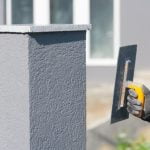Are you considering a major renovation or home improvement project? You may be wondering how to finance large home improvements. Whether it’s a kitchen remodel, adding an extension, or upgrading your HVAC system, these projects can come with a hefty price tag. In this article, we will explore the various financing options available to homeowners looking to undertake substantial renovations.
Before diving into funding options, it’s important to first assess the cost of your home improvement project. Estimating the budget for your renovation will help you determine how much financing you will need and what type of funding will be most suitable for your specific needs. Once you have an idea of the costs involved, we can then move on to exploring the different ways in which you can finance your large home improvements.
From traditional loans and lines of credit to leveraging your home equity and seeking government assistance programs, there are multiple avenues for securing financing. We’ll also touch on personal financing strategies such as saving and investing for your home improvement projects. By the end of this article, you’ll be equipped with valuable insights and expert advice to make informed financial decisions for your home improvement needs.
Assessing the Cost
When it comes to large home improvement projects, one of the most important steps is to accurately assess the cost and estimate the budget for the project. This includes taking into account all the necessary expenses such as materials, labor, permits, and any unexpected costs that may arise during the renovation process. In this section, we will discuss how to effectively assess the cost of your home improvement project and create a realistic budget.
Estimating Project Expenses
Before diving into a large home improvement project, it is crucial to have a clear understanding of all potential expenses involved. This includes getting estimates from contractors or suppliers for materials and labor, as well as factoring in any additional costs such as permit fees or equipment rentals. By doing thorough research and obtaining multiple quotes, homeowners can get a better idea of the total cost of their project and avoid unpleasant financial surprises along the way.
Creating a Realistic Budget
Once all potential expenses have been identified, it’s time to create a comprehensive budget for the home improvement project. A realistic budget should take into account not only the direct costs of materials and labor but also an allowance for unforeseen expenses or changes in plans. It’s important to be conservative in estimating costs and leave room for contingencies to ensure that there are enough financial resources available to complete the project without cutting corners or sacrificing quality.
Seeking Professional Assistance
For homeowners who are unsure about how to finance large home improvements or struggle with estimating their project budget, seeking professional assistance can be incredibly valuable. Financial advisors or loan officers can provide expert guidance on securing funding options that best suit individual needs, as well as offer advice on creating a detailed budget that aligns with specific renovation goals.
Additionally, consulting with industry professionals such as contractors or real estate agents can provide valuable insights into expected costs for certain types of renovations based on local market conditions.
Exploring Funding Options
When it comes to financing large home improvements, there are several options to consider in order to fund your project. One of the most common ways to finance a major renovation is through loans, lines of credit, or leveraging your home’s equity. Each option has its own advantages and drawbacks, so it’s important to carefully compare them before making a decision.
Loans and lines of credit are often used for home improvement projects. Personal loans typically have fixed interest rates and can be obtained from banks or online lenders.
On the other hand, lines of credit provide you with access to a certain amount of money that you can borrow from as needed. Both options can provide the funds necessary for your home improvement project, but it’s crucial to consider the interest rates and repayment terms to ensure that they align with your financial situation.
Another popular option for financing large home improvements is leveraging your home equity. Home equity loans allow homeowners to borrow against the value of their homes, using their property as collateral. Another way to utilize your home’s equity is through a home equity line of credit (HELOC), which functions similarly to a credit card where you have a revolving line of credit based on the value of your home.
It’s important to carefully consider all funding options when financing large home improvements, understanding the various terms, interest rates, and requirements associated with each choice. By comparing loans, lines of credit, and leveraging home equity effectively, you can make an informed decision that aligns with your financial needs and goals.
| Funding Option | Key Details |
|---|---|
| Personal Loans | Fixed interest rates; obtained from banks or online lenders |
| Lines of Credit | Provides access to a certain amount of money as needed; variable interest rates |
| Home Equity Loans/HELOC | Borrowing against the value of your home; using property as collateral; revolving line of credit based on home’s value |
Leveraging Home Equity
When it comes to financing large home improvements, leveraging your home equity can be a smart and cost-effective option. By using the value of your home as collateral, you can access the funds you need for renovations or upgrades. Here are some ways to use your home’s equity to secure financing for your next big project:
1. Home Equity Loan: A home equity loan allows you to borrow a lump sum of money using the equity in your home as collateral. This type of loan typically has a fixed interest rate and a set repayment period, making it easier to budget for your home improvement expenses.
2. Home Equity Line of Credit (HELOC): A HELOC works similarly to a credit card, allowing you to borrow against the equity in your home on an as-needed basis. This flexibility can be especially useful for ongoing or long-term projects where you may need access to funds over an extended period of time.
3. Cash-Out Refinance: With a cash-out refinance, you can replace your existing mortgage with a new one that has a higher balance, allowing you to receive the difference in cash. This option can be beneficial if you want to take advantage of lower interest rates or if the value of your home has increased since you purchased it.
Using your home’s equity as a source of financing for large home improvements requires careful consideration and planning. It’s important to evaluate the different options available and choose the solution that best fits your financial goals and needs.
Ultimately, leveraging your home equity can provide a cost-effective way to finance significant renovations or upgrades while potentially adding value to your property in the process. By exploring these options and seeking professional advice, you can make informed decisions about how to finance large home improvements while maximizing your resources and minimizing costs.
Government Assistance Programs
Understanding Government Assistance Programs
Government assistance programs are designed to provide financial support to homeowners who need help with major home improvement projects. These programs can come in the form of grants, subsidies, or low-interest loans, and they are usually offered by local, state, or federal government agencies. The main goal of these programs is to help homeowners make necessary renovations that may be otherwise unaffordable.
Types of Government Assistance Programs
There are various types of government assistance programs available to homeowners for home renovations. Some programs are specifically tailored to low-income families or individuals, while others may be more general in nature and available to a wider range of homeowners. It’s important to research the specific eligibility requirements and application processes for each program you are considering.
Applying for Government Assistance
When considering using government assistance to finance your large home improvement project, it’s essential to thoroughly research the available programs and understand their specific requirements. Once you have identified a program that you may qualify for, carefully review the application process and gather all necessary documentation before applying. Keep in mind that government assistance programs often have limited funding and may have a competitive application process, so it’s crucial to submit your application as early as possible.
Exploring government assistance programs can be a valuable resource for financing large home improvements. By taking advantage of these programs, homeowners can alleviate some of the financial burden associated with major renovation projects and make their homes safer and more comfortable without sacrificing their financial well-being.
Personal Financing
When it comes to large home improvement projects, finding the right financing is essential. Personal financing through saving and investing is one option that homeowners can consider when looking to fund their renovation endeavors. This section will explore how individuals can proactively save and invest in order to finance their home improvement projects effectively.
One of the first steps in personal financing for home improvement projects is creating a dedicated savings plan. This involves setting a specific amount of money aside each month towards the renovation goal.
By establishing a clear budget and sticking to it, homeowners can gradually build up the necessary funds for their project over time. It’s also important to consider setting up a separate savings account specifically for the renovation fund, which can help prevent any temptation to dip into these savings for other expenses.
In addition to saving, investing can also be a viable option for financing large home improvements. For those with a longer timeline before the renovations need to take place, investing in stocks, bonds, or mutual funds could potentially yield higher returns compared to traditional savings accounts. However, it’s crucial to carefully research and consider the risks involved in investment options before allocating funds towards them.
| Personal Financing Tips | Benefits |
|---|---|
| Create a dedicated savings plan | Gradually build up necessary funds |
| Consider setting up a separate savings account | Prevent temptation to use savings for other expenses |
| Research and consider risks before investing |
Financing Tips and Tricks
When it comes to financing large home improvements, finding ways to maximize your resources and minimize costs is crucial. By being strategic and savvy with your finances, you can make your home improvement project more affordable and manageable. Here are some tips and tricks for financing large home improvements:
1. Create a budget: Before starting any home improvement project, it’s important to establish a realistic budget. Assess the total cost of the project, including materials, labor, permits, and any unexpected expenses. By setting a budget from the beginning, you can avoid overspending and ensure that you have enough funds to complete the project.
2. Research financing options: There are various funding options available for large home improvements, including loans, lines of credit, and home equity options. Compare the interest rates, terms, and repayment plans of each option to determine which one best suits your financial situation.
3. Maximize savings: If you’re planning a home improvement project in the future, start saving as early as possible. Set aside a portion of your income each month specifically for this purpose. Additionally, consider cutting back on unnecessary expenses to boost your savings even further.
4. Take advantage of incentives: Look for government assistance programs or grants that can help offset the cost of your home renovation. Some programs offer financial assistance or tax credits for energy-efficient upgrades or renovations that improve accessibility for individuals with disabilities.
By following these financing tips and tricks, you can make informed decisions about how to finance large home improvements while maximizing your resources and minimizing costs. With careful planning and research, you can find the best financial solution that works for your specific needs and circumstances.
Expert Advice
Seeking professional financial guidance for large home improvements is a crucial step in ensuring that you make informed decisions about financing your project. A financial advisor with experience in the real estate and home improvement field can provide valuable insights into the best funding options for your specific situation. They can help you navigate the complexities of loans, lines of credit, home equity, and government assistance programs to find the most cost-effective solution for your needs.
A financial advisor can also assist you in creating a realistic budget for your home improvement project and help you assess what financing options are feasible based on your financial situation. They can provide you with expert advice on how to maximize your resources and minimize costs throughout the renovation process. Additionally, they can guide you in understanding the potential risks associated with different financing options and help you develop a comprehensive strategy to manage those risks effectively.
Furthermore, a professional financial advisor can offer personalized insights into personal financing strategies such as saving and investing for home improvement projects. By analyzing your current financial position and long-term goals, they can help you devise a plan to build up funds specifically earmarked for future home improvements. With their guidance, you can make well-informed decisions on how best to finance large-scale renovations while maintaining overall financial stability.
Conclusion
In conclusion, financing large home improvements can be a significant financial undertaking, but there are numerous options available to homeowners. By assessing the cost, exploring various funding options such as loans, lines of credit, and home equity, and leveraging government assistance programs and personal financing strategies, individuals can make informed decisions about how to finance their home improvement projects.
It’s essential to carefully consider the pros and cons of each financing option available and to seek professional financial guidance when necessary.
One of the most important things to keep in mind when considering how to finance large home improvements is to create a comprehensive budget for the project. This will help in identifying the amount needed and determining which financing option is best suited for your specific circumstances. Whether it’s using your home’s equity or seeking government grants and subsidies, understanding the total cost of the project is crucial in making an informed financial decision.
Ultimately, making informed financial decisions for your home improvement needs requires thorough research, careful planning, and expert advice. By taking advantage of all available resources and maximizing your financing options while minimizing costs, homeowners can embark on their home improvement projects with confidence. With careful consideration and strategic financial planning, individuals can turn their renovation dreams into reality without causing unnecessary strain on their finances.
Frequently Asked Questions
How Do People Afford Large Home Renovations?
People afford large home renovations through a variety of methods. Some save up for years to fund their project, while others may take out a home equity loan or refinance their mortgage. Some may also use a combination of savings, loans, and grants to cover the costs.
What Is the 30 Rule for Renovations?
The 30 Rule for renovations refers to the recommended percentage of your home’s value that should be spent on renovations. This rule suggests not spending more than 30% of your home’s current market value on renovations to avoid over-improving the property compared to neighboring homes.
Is It Better to Pay Cash or Finance Home Improvements?
Whether it’s better to pay cash or finance home improvements depends on individual circumstances. Paying cash reduces the overall cost due to interest, but it may deplete savings. Financing allows spreading the cost over time but can result in paying more due to interest and fees.

I’m thrilled to have you here as a part of the Remodeling Top community. This is where my journey as an architect and remodeling enthusiast intersects with your passion for transforming houses into dream homes.





